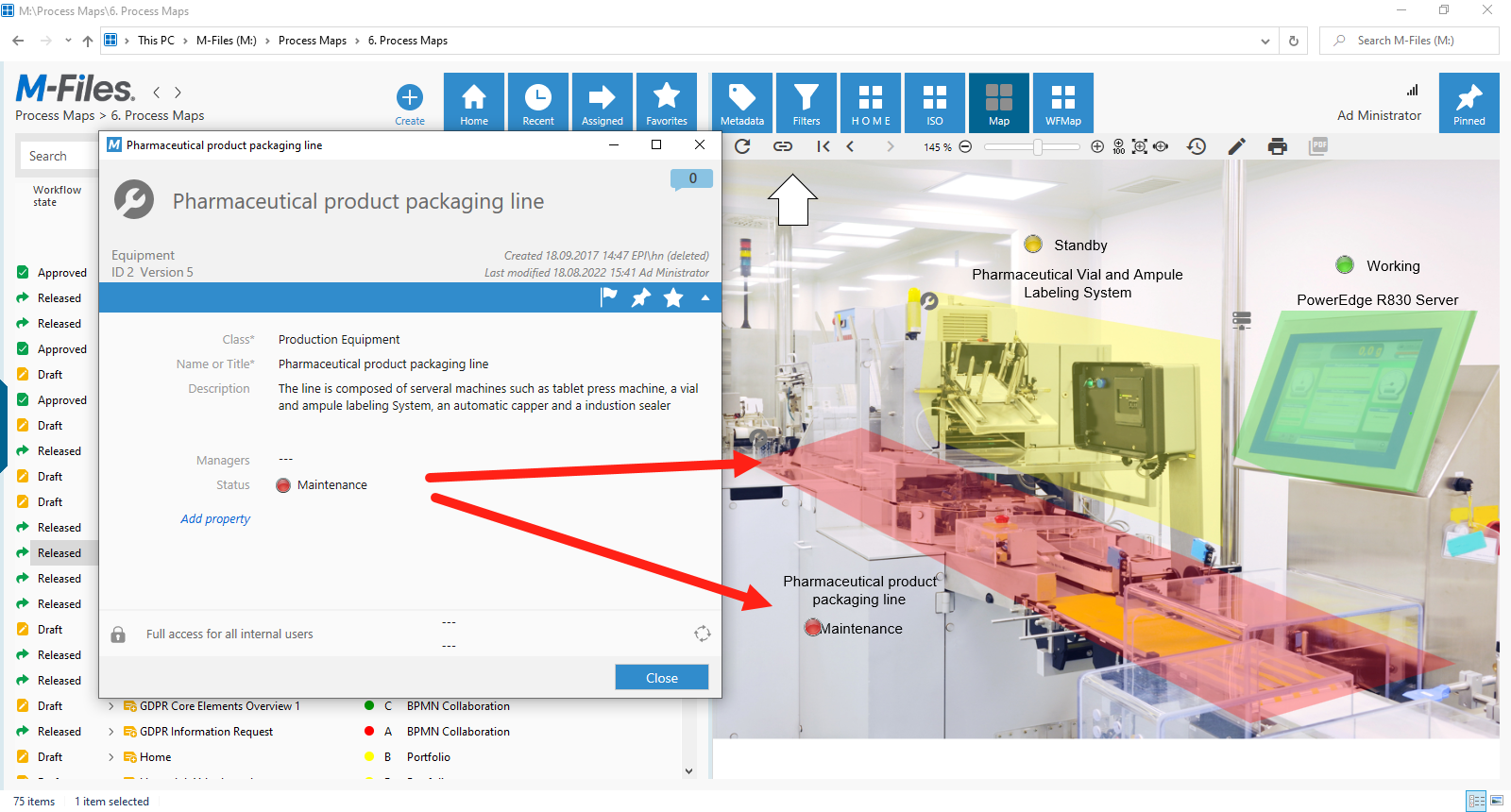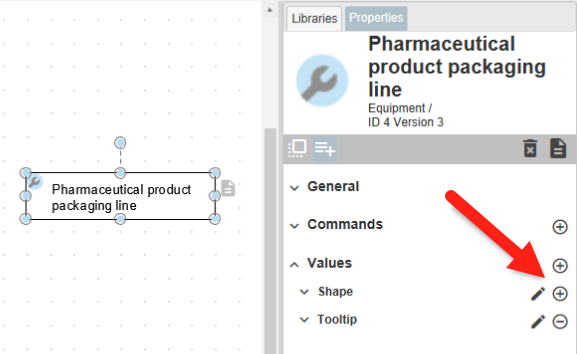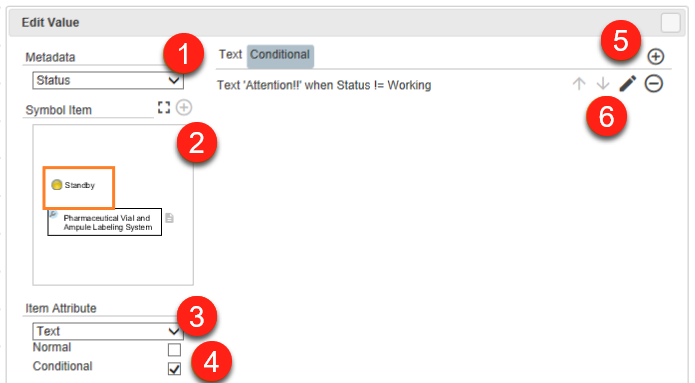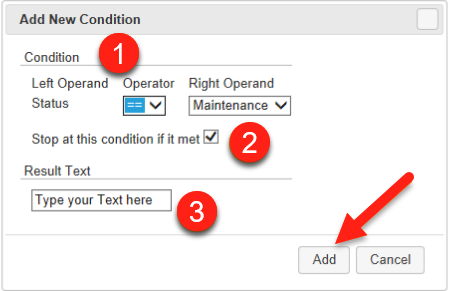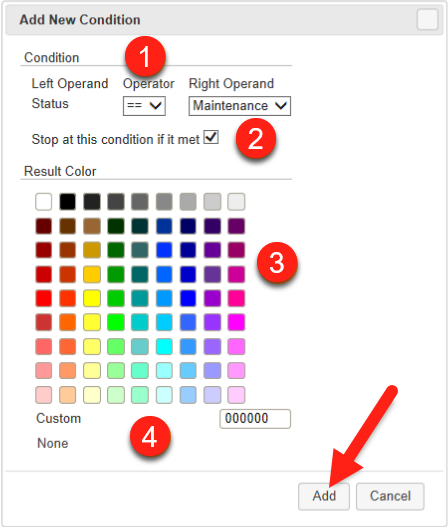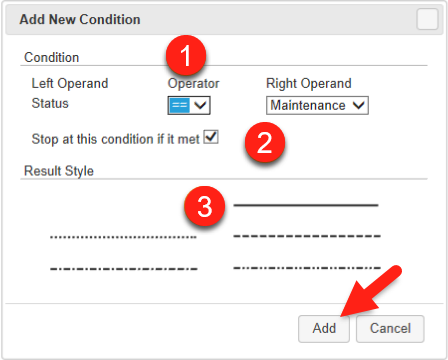meta data for this page
Conditional Values
With conditional values, status changes or other context-specific changes to M-Files metadata can be represented by text changes and dynamic color values. This is a good way to visualize changes and make your maps even more appealing.
New Value and Edit Value
To store conditional values, select an element that has been linked to an M-Files object. Selecting an element, e.g. a rectangle, that has not yet been linked to an M-Files object, adds the value automatically and links it to the map object e.g. the process map itself:
- Open the
Valuesarea in the Properties tab. - Select either
 -
- New Valueor
Edit Value.
Conditional values are currently not available for tooltips.
Conditional Values
To store a new conditional value:
- Choose the metadata for the condition that is to be evaluated (for example, property = 1 means text or color = green, property = 2 means text or color = red, and so on).
- If necessary, add the label you want to adjust dynamically in the text or select the symbol itself if you want to make color changes to it.
- In the Item Attribute area, select the attribute that you want to change dynamically:
- Text - enables text changes based on values e.g. if you only want to display a text if the metadata has a certain value. (Only available for text elements such as labels)
- FontColor - change the color of the label text (only available for text elements like labels)
- LineStyle - change the style of the border of an element
- LineColor - change the color of the border of an element
- FillColor - dynamic change of the fill color
- Select the
Conditionaloption. - Add new conditions by clicking on the
 Plus button.
Plus button. - Set the order of the conditions using the
 arrow buttons. If necessary edit the conditions with the
arrow buttons. If necessary edit the conditions with the  pen button or delete them with the
pen button or delete them with the  delete button.
delete button.
At least one condition is required for a rule-based display. Changes in the M-Files Document Vault are displayed directly on the map after you confirm the dialog with Add.
Add New Conditions
If you press the  plus button or the
plus button or the  pen button on the Conditional Tab in the
pen button on the Conditional Tab in the Add New Value or Edit Value window, the Add New Condition or Edit Condition dialog appears. In this window, you can create a condition based on rules.
- Define a condition that must be fulfilled for the rule to apply. The left operand is automatically set to the selected metadata from the previous dialog. The right operand represents the property values of the metadata property. If you select a property that does not contain any values, an input field is displayed where you can enter the required value. Use the following characters as operators to set up the rule:
 Is equal to
Is equal to Is unequal
Is unequal Is greater than
Is greater than  Is smaller than
Is smaller than Is greater than or equal to
Is greater than or equal to Is less than or equal to
Is less than or equal to
- By default, the option
Stop at this condition if metis set to avoid unnecessary application operations. In exceptional cases, it is useful to disable this option, if you have created rules that are mutually dependent or if you want to query multiple texts in your metadata. However, this can reduce the performance of the application. - The window has a different results area depending on whether you define a rule for Text, Color or LineStyle. Enter a text, select a color or the line style.
- You can also customize the colors or insert a specific rule that makes the element invisible (None).
After you have selected Add, your condition is added or adjusted.
Note: Conditional value comparisons are always STRING comparisons. Integer values and dates are transformed into strings. If you want to compare against the availabilty of a property, please use #na# as the right operand.
If you want to check against a property that is available in the object, but not the property is not filled, then use #empty# as the term as the right operand.

